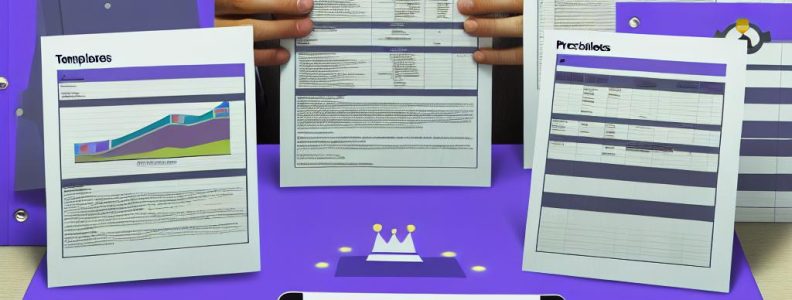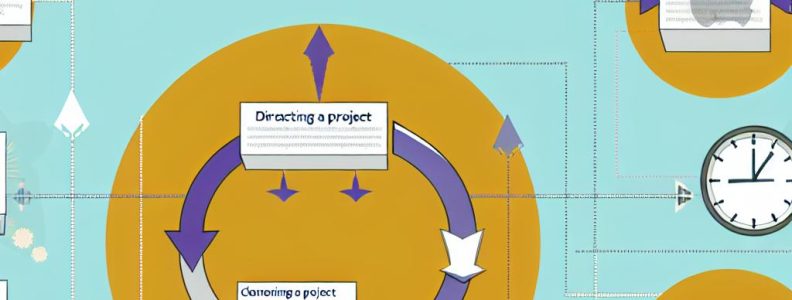Understanding PRINCE2 and Agile
PRINCE2 and Agile are two widely used project management methodologies, each with unique features that offer various benefits. Understanding their core principles can help you determine which approach best suits your project needs.
PRINCE2: A Process-Driven Approach
PRINCE2, which stands for PRojects IN Controlled Environments, is a structured project management method that emphasizes organization and control. Originally developed by the UK government, PRINCE2 is now utilized globally across various industries. It is renowned for providing a detailed framework with clearly defined processes, explicit roles and responsibilities, and methodically planned project phases.
Key Features of PRINCE2:
- Focus on business justification throughout the project lifecycle.
- Defined roles and responsibilities for project management.
- Structured approach with emphasis on planning, monitoring, and controlling processes.
- Flexibility to be tailored for projects of varying sizes and complexities.
The PRINCE2 framework is essentially a recipe book of process-driven steps that guide project managers through the necessary activities involved in planning, executing, and closing projects. It is characterized by a number of principles, themes, and processes that are interwoven to ensure comprehensive project oversight.
Principles: PRINCE2 is guided by principles such as continued business justification, defined roles and responsibilities, and learning from previous projects. These principles ensure that a project remains viable and achieves its objectives efficiently.
Themes: Themes in PRINCE2 include business case management, quality, risk management, and change control. These elements allow teams to focus on maintaining the integrity and delivery of the project.
Processes: The PRINCE2 processes offer a roadmap from the project outset through to closure. They include starting up a project, directing the project, delivering the project, and closing the project. Each of these processes lays out a systematic approach to managing the project lifecycle.
It is worth noting that PRINCE2 also emphasizes the concept of tailoring to the project environment. This adaptability makes it a fit for various project scales and settings, allowing organizations to make relevant adjustments instead of adopting a one-size-fits-all process. For more detailed information on PRINCE2, refer to the official PRINCE2 methodology resources provided by AXELOS.
Agile: A Flexible, Iterative Methodology
Agile is a collection of methodologies based on iterative development, where requirements and solutions evolve through collaboration between self-organizing, cross-functional teams. Unlike PRINCE2, Agile is less prescriptive and focuses on adaptive planning and delivery. Popular Agile frameworks include Scrum, Kanban, and Lean, each facilitating a cycle of continuous improvement and flexibility.
Key Features of Agile:
- Emphasis on customer collaboration and responsiveness to change.
- Iterative work cycles known as sprints or iterations for rapid delivery.
- Continuous feedback loops and stakeholder engagement.
- Empowerment of cross-functional teams to make decisions.
Agile methodologies are derived from the Agile Manifesto, which emphasizes individuals and interactions over processes and tools, working software over comprehensive documentation, customer collaboration over contract negotiation, and responding to change over following a plan.
Agile Frameworks:
- Scrum: Focuses on small, cross-functional teams working in time-boxed iterations called sprints.
- Kanban: Visualizes work processes to improve flow and ensure tasks are completed efficiently.
- Lean: Emphasizes value delivery with minimal waste, continuously improving processes based on stakeholder feedback.
Agile’s strength lies in its flexibility and adaptability, allowing teams to adjust plans in response to evolving project dynamics and customer feedback rapidly. This makes Agile particularly useful in environments where requirements may change frequently, and innovation is key. It also encourages constant communication with the customer to ensure alignment with their needs.
To explore more on Agile methodologies, useful resources are available on platforms like Agile Alliance.
Comparing PRINCE2 and Agile
When comparing PRINCE2 and Agile, it is essential to consider the nature of the project, industry requirements, and organizational culture.
PRINCE2 is suitable for:
- Projects that require a high level of control and predictability.
- Environments where roles and processes need explicit definition.
- Large-scale projects with multiple stakeholders demanding comprehensive documentation.
Agile is suitable for:
- Projects in dynamic environments where requirements may change frequently.
- Organizations prioritizing speed and flexibility over formalized documentation.
- Teams that thrive on collaboration and iterative feedback.
PRINCE2’s rigorous structure provides a stable framework for complex and large-scale projects, where thorough documentation and risk management are crucial. Meanwhile, Agile offers speed and flexibility, making it suitable for smaller, rapidly changing projects allowing for consistent updates and modifications according to client needs.
Making the Choice
Choosing between PRINCE2 and Agile is not straightforward and often depends on specific project needs. Some organizations opt for a hybrid approach, integrating elements of both methodologies to leverage their respective strengths. Understanding the demands of your project, the working environment, and stakeholder expectations helps in making an informed decision.
Considerations for PRINCE2: Consider adopting PRINCE2 where there is a need for detailed documentation and clear stage-by-stage progress tracking. It suits a corporate environment where governance and structure are highly valued, and complex stakeholder management is necessary.
Considerations for Agile: Choose Agile if you foresee a need for rapid product iterations and evolving project requirements. It’s especially beneficial in startup environments or projects where making quick adjustments is essential to success.
Hybrid Approaches: In practice, many organizations find value in blending methodologies, using PRINCE2 for its governance and Agile for its flexibility. For instance, Executive managers might utilize PRINCE2 for long-term planning, while development teams operate within Agile sprints to handle day-to-day project adjustments.
For further guidance and insights into integrating these methodologies, consult resources available through professional project management institutions or training bodies such as Project Management Institute. Evaluating the project’s specific needs, team skills, and organizational culture will guide which approach or combination will increase the likelihood of project success.










